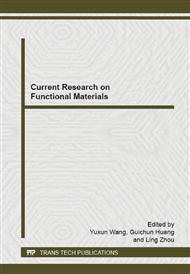p.129
p.136
p.143
p.150
p.157
p.165
p.173
p.177
p.181
Effect of Different Cooling Rate on the Freezing Behavior of TiB2/A356 Composite
Abstract:
The microstructure and tensile properties of TiB2 particles reinforced A356 composite materials at different cooling rates are investigated. Experimental results show that the composition of the alloy solidification ,eutectic silicon content , morphology and size have undergone significant changes while the cooling rate increased: On one hand, α-phase grains significantly reduced, by a 50 μm average grain size refinement to 1~5μm with the evolution from coarse dendritic to rosette dendritic, or even spherical evolution; On the other hand, eutectic Si content increases, and diameter, aspect ratio also showed a decreasing trend, while the circularity is gradually increasing. Meanwhile, with the increasing of cooling rate, the particle distribution of TiB2/A356 particle reinforced composite materials can be optimized. Particle aggregation is reduced, as a result TiB2 particles’ reinforcement is more obvious, and the tensile fracture shows the obvious characteristics of ductile fracture.
Info:
Periodical:
Pages:
157-164
Citation:
Online since:
October 2014
Authors:
Price:
Сopyright:
© 2014 Trans Tech Publications Ltd. All Rights Reserved
Share:
Citation:


